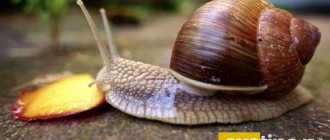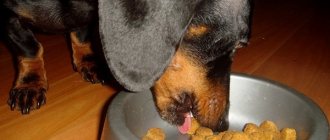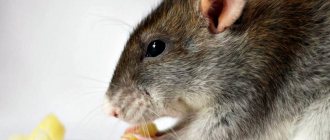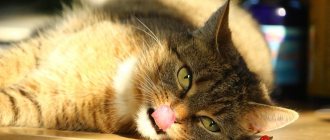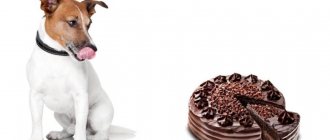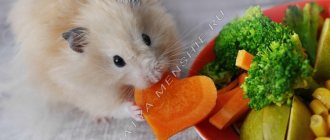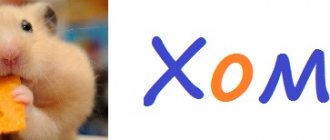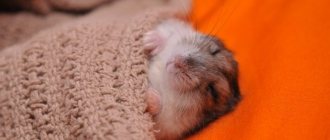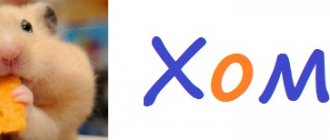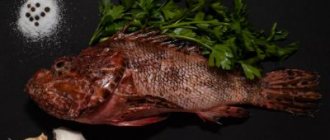We all know that hamsters need to eat a balanced diet to stay healthy and happy throughout their lives. But what does a healthy diet include? What foods are healthy and safe for our pets? We know that hamsters eat a variety of foods, but can they eat meat?
Sometimes we can give our pets food they shouldn't eat without any consequences in the short term. But they may experience health problems in the long run. So, let's find out whether you should give meat to hamsters or not.
Can hamsters eat meat?
There is a misconception that if you feed a hamster meat, it will become a cannibal. Pet rodents need animal protein for normal development and maintenance of strength.
Meat must be boiled; raw meat will be harmful.
It is not advisable to give your hamster meat from the following list:
- pork;
- mutton;
- fatty beef.
Fatty foods have a negative effect on the hamster's liver and cause obesity. One source of animal protein that hamsters enjoy eating is eggs. Eggs contain a balanced complex of all vitamins, minerals and trace elements necessary for life.
Can hamsters eat chicken?
Chicken meat is an essential product in a hamster's diet. It contains microelements such as iron, phosphorus, potassium, and is also rich in vitamins of various groups. The most useful elements are contained in chicken breast. Therefore, the hamster should be given boiled breast without salt and spices. This is an excellent dietary meat that will only benefit your pet’s health.
Prohibited plants
In addition to healthy greens, there are herbs that fluffies should not eat. Everyone knows that sorrel is very tasty and rich in vitamins, but small rodents should absolutely not eat it. It is too acidic and can corrode the mucous membrane of the digestive tract or cause allergies.
Prohibited herbaceous plants also include:
- potato tops (and sprouts). Not recommended due to the high content of the alkaloid solanine, which is poisonous to hamsters;
- white cabbage. Weakens the hamster's delicate stomach, causing diarrhea;
- garlic and onion feathers contain strong-smelling essential oils that provoke allergies. The hamster himself will not eat them because of the sharp bitter taste;
- mint and lemon balm are also strong allergens.
It is strictly forbidden for domestic rodents to collect grass from the street, because it is covered with a layer of dust, soot and heavy metals, poisonous to furry babies.
Can hamsters have sausage and frankfurters?
The hamster's body is very sensitive to food, regardless of the type of animal. The Djungarian hamster and the Syrian hamster are the most common types of domestic rodents. They differ from each other in size, but their diet is the same, which means the Syrian can suffer in the same way from harmful food as the Djungarian.
Sausages and frankfurters are processed meats. This product contains a huge amount of fat, spices, salt, not to mention preservatives, dyes and so on.
A rodent’s stomach simply cannot process such a composition. Therefore, it is impossible to give sausage to hamsters, and even strictly prohibited, since the pet may not refuse such a treat, but the consequences for its health will be more than terrible.
Possible problems in the diet of dzhungarika
The Djungarian hamster is a tiny animal (the average weight of an adult is about 50 g). This somewhat shortens the list of what you can feed your pet: what is good for other rodents, but death for the dzhungarika. For example, almonds contain hydrocyanic acid, which is harmless for a larger pet, but can easily poison your hamster.
The second important point is that Djungarians are prone to obesity and diabetes. They should not be overfed, given sweets, or fed flour or very sweet fruits. Despite the fact that they love to eat, we put them on a strict diet.
I can handle it, I can handle it without cookies!
Can hamsters fish?
Fish, as a seafood, is a very healthy food. It contains almost no saturated fat. Conclusion - you can and should give fish to hamsters. Fish is rich in iodine and vitamins A, D, E. Hamsters eat not only fish meat, but also cod liver and fish oil (one drop in food once a week). The benefits of these products are as follows:
- liver and fat strengthen the immune system;
- the fur will look healthy and silky;
- the hamster will never get a cold;
- fish is useful for maintaining good vision.
Conclusion
Thus, meat is an essential product in a hamster’s diet. The meat should be divided into small pieces and given to the pet in small portions.
Here is a general list of what hamsters can eat as protein food:
- boiled chicken (without salt and spices);
- boiled lean beef;
- boiled fish (without salt and spices);
- fish fat;
- fish liver;
- eggs;
- cottage cheese (no more than 1% fat content);
- baby meat puree.
The diet of hamsters should be supplemented with vegetables, fruits, herbs and protein products. But not all food is good for rodents.
Let's find out what you can feed your hamster at home, and what foods it is better to avoid.
- What does a hamster eat
- Grain mixtures
- Green food
- Vegetables and fruits
- Can hamsters eat meat?
- Vitamins and minerals
- How to make a hamster's diet
- What should you not give hamsters to eat?
Beans
Legumes are often a staple in a hamster's diet, including beans. It can be given in any form, including dry, fresh and thawed. However, it has the best effect on your pet’s health when consumed fresh, as it contains more nutrients.
IMPORTANT! Not all beans are good for your hamster. Red beans (kidni) can only harm him, since their toxicity will lead to deterioration of the animal’s digestion, which is why it should not be consumed.
Green beans are also suitable for consumption. It is most often found frozen, but pets prefer it fresh because of the juice it contains. Before serving defrosted green beans, check its composition; it should not contain any preservatives, which are often added to improve the taste of the product, and additives are dangerous for rodents.
Before giving it to the hamster, it is better to soak the beans, because this way they are better absorbed, giving useful microelements to the rodent’s body. For soaking, one night and water at room temperature is enough.
What does a hamster eat
Hamsters need to be fed correctly, since the normal development of small rodents, as well as the quality and life expectancy of adults, depends on this. These animals are not selective in their diet, so you need to watch what they eat.
Grain food for hamsters is the basis of their diet. The advantage of store-bought formula is that it contains a balanced amount of carbohydrates, proteins, fats, vitamins and minerals. This is the most convenient option for the pet and the owner, since it is easy to dose and does not spoil.
Important! Hamsters need to be given special dry food. Mixtures for other rodents, animals or birds are not suitable for them. Such food can cause digestive upset in these rodents.
The quality of the feed is an important indicator. The hamster's body should receive beneficial substances, not harmful chemical additives.
You can give your hamster your own prepared dry mixture. Animals love to eat millet, corn, oats, and barley. You need to observe which grains your pet prefers in order to prepare tasty food. But veterinarians advise buying ready-made mixtures.
The menu can be supplemented with seeds, legumes, and nuts.
A proper diet should include fresh greens. Every veterinarian will confirm that your hamster can eat seasonal vegetables, fruits and berries. These products allow you to make the menu more varied.
Hamsters can be given protein sources periodically. Such food is needed for normal development of the body and muscle growth.
Inexperienced owners do not always understand what they can eat for small hamsters that have been abandoned by their nursing mother. Kitten formula is suitable for them. The powder is diluted with warm boiled water and given to children from a pipette.
2 weeks after birth, infant formula, ground porridge (no milk, sugar, or salt) with finely chopped fresh herbs are introduced into the diet of small hamsters. Animals can eat boiled meat or pumpkin puree, chopped yolk or cottage cheese. After 3 weeks, the small pet can eat “adult” food (pre-chopped). Until 4 weeks they need to be fed with mixtures.
Not all future owners know that hamsters drink quite a lot. There should always be a drinking bowl with chilled boiled water in the cage. The fluid needs to be changed 2–3 times a day.
Feeding your hamster during digestive disorders should be discussed with your veterinarian. If the violations are one-time, then you can correct them yourself. For example, for diarrhea, you can give your pet an infusion of slightly undercooked rice, and for constipation, 2 drops of petroleum jelly at intervals of 3 hours.
Older rodents have a decreased appetite and prefer soft food. Food for the “old man” should be crushed (ground nuts, vegetables, fruits, water porridge). But sometimes he needs to be given grains or crackers to avoid problems with digestion. He should drink warm boiled water or chamomile infusion.
Favorite treats for hamsters: popcorn, crackers, cookies. Only it is better to cook popcorn at home from corn kernels, without adding sugar, salt, or fat. Biscuit cookies are more suitable; you can also give dry cookies and other products that contain a minimum of sugar.
If a rodent eats a lot of treats, it will gain a lot of weight, so you need to maintain moderation in its diet.
Grain mixtures
You can distinguish a high-quality grain mixture from a cheap feed by the following characteristics:
- no dust when pouring;
- there are no foreign inclusions;
- no harmful chemical additives;
- whole grains, without traces of spoilage;
- the packaging is not damaged.
Food for dwarf rodents should not contain unpeeled oats and seeds, as they can injure the cheek pouch. If the mixture contains a lot of honey and sweet fruits, the risk of developing diabetes will increase.
The following foods are suitable for dwarf hamsters: JR Farm Classic feast, Chica-bio. Contains seeds of wild plants, animal protein, dry vegetables, chopped birch branches.
You can make your own food from millet, wheat, oats, and a small amount of raw sunflower seeds. A diabetic pet hamster can be fed a mixture of parrot food and a mixture of weeds.
Interesting! Some owners try to feed an adult rodent with food intended for cats. However, such an experiment can lead to diarrhea, dermatitis, and disruption of the functionality of the digestive organs.
You can supplement your rodent's diet with food for your guinea pig, which mainly eats grass, green peas, lentils and nuts (walnuts, pine, peanuts). Hamsters can also eat pumpkin, melon, and sunflower seeds (a little, since this food is fatty).
A birch, poplar, willow, maple or walnut branch will help the hamster sharpen his incisors. Therefore, such sticks should always be available to the animal.
Green food
From time to time, owners feed the hamster fresh herbs, which contain vitamins, carbohydrates, and proteins. Your pet can eat greens from the garden, some weeds, fodder crops, medicinal herbs, and tree leaves.
List of herbs that hamsters can eat:
- lettuce, beet leaves;
- carrot tops;
- dill, parsley;
- lawn grass of the Bluegrass genus;
- celery;
- spinach;
- leaves of nettle, wheatgrass, dandelion;
- sprouts of cereal crops (oats, wheat);
- alfalfa;
- clover;
- leaves of apple tree, birch.
You can dilute the diet with medicinal herbs, such as plantain, burdock, knotweed, and rose hips.
Interesting! In summer, the grass can be dried for future use to give to your pet in winter. It is recommended to collect raw materials in places that are far from roads and factories. It needs to be washed and dried for at least a week. Store the herb in glass jars.
Vegetables and fruits
Most owners know that pet hamsters eat vegetables:
- cucumbers;
- cauliflower and Brussels sprouts;
- carrot;
- paprika;
- turnip;
- squash, zucchini;
- eggplant.
1 – 2 times a week you can feed your hamster pumpkin, tomato, and beetroot. The animal eats boiled and fresh vegetables.
Fruit nutrition is necessary for pets, as it saturates their body with vitamins. Every hamster loves juicy fruits, but you can give them as a reward, especially to representatives of dwarf breeds that are susceptible to diabetes.
List of allowed fruits (unsweetened varieties) for hamsters:
- apples;
- pears;
- apricots;
- plums;
- peach;
- nectarine;
- banana (minimum quantity).
Another favorite food for hamsters is berries. They are given three times a week as supplementary food. The pet can eat strawberries, strawberries, gooseberries, currants, blueberries, raspberries, blueberries, several cherries or cherries.
Important! Your hamster can eat seasonal foods that are free of pesticides and other chemicals. The seeds are removed from the fruit, as they can scratch the cheek pouches or cause intoxication.
Dried fruits also contain a lot of sugar, so you shouldn’t overuse them. No more than 2 times a week, a hamster can eat raisins, dried apricots, dried pears, apples, prunes and banana chips.
Can hamsters eat meat?
Hamsters must be fed foods that contain a lot of protein. The pet happily eats cottage cheese, natural yogurt without additives, and drinks kefir. Foods with a fat content of about 1% are suitable for its nutrition.
Hamsters love to eat boiled meat, but salt and seasonings should be avoided. You need to choose a low-fat product (chicken, turkey). The animals will not refuse a small piece of homemade lard or shrimp.
Before you treat your pet, you need to know whether hamsters can eat sausage. They will definitely like the treat, but rodents are only allowed to eat the cooked product. The sausage product should be low-fat and with a minimum amount of spices.
A hamster can eat a boiled egg, it will like this food. But he will have enough protein, since the yolk contains a lot of fat and cholesterol.
Hamsters love to eat fish, but you need to choose low-fat varieties (hake, pollock, blue whiting). The product is boiled without salt and spices. You can treat your pet up to 3 times a week. Cod liver and fish oil are occasionally added to the diet (no more than 1 drop in a pipette).
The hamster also loves to eat insects: worms, butterflies, grasshoppers. They can be caught or purchased at a pet store.
Important! Treat your hamster to one type of protein food no more than 2 to 3 times a week.
Vitamins and minerals
Hamsters need vitamin supplements to support their immune system, strengthen their coat, and improve their general condition. Typically, beneficial substances enter the body from dry food and other products. If the owner buys a cheap grain mixture, and the pet’s nutrition is unbalanced, then additional fortification is necessary.
Important! It is forbidden to give hamsters vitamins for humans, as they have inappropriate composition and concentration.
Vitamin and mineral complexes for hamsters are produced in the form of tablets and liquid concentrates. The veterinarian will advise which medications to choose for your pet.
Viatminization is necessary in the following cases:
- seasonal molting;
- frequent colds;
- recovery from injury or illness;
- poor diet;
- frequent stress;
- condition after childbirth.
There are drops on sale that are often passed off as vitamin supplements. However, such food contains a lot of sugar, which burdens the gastrointestinal tract and increases the risk of endocrine disorders.
Choosing dry food
The diet of jungarians consists of 80-90% dry food. The hamster should receive it every day, this is the basis of the diet. Djungarian hamsters eat little (about a tablespoon of food per day), which means you shouldn’t skimp on store-bought formulas. Let's consider several brands of proven products:
Food for dwarfs
Versele-Laga "Prestige Mini Hamster Nature"
The completely balanced composition, in addition to grains and seeds, contains dried vegetables, fruits and nuts, a protein component and yeast as a source of vitamins. If your pet is prone to obesity, you need to manually select pineapple and raisins.
Chika-Bio "Food for Djungarian hamsters"
Domestic food, not inferior in quality to imported analogues, but more affordable. The size of the food particles and the ratio of ingredients are selected specifically for feeding jungarians.
Food for hamsters of any type of excellent quality
JR Farm Hamster
It has high palatability: dungarians feed by eating the entire food, rather than choosing individual tasty components. The “chips” of the food are a variety of protein sources (mealworms, chicken, tiny fish), the prebiotic inulin, which improves digestion, and yucca extract, which reduces rodent odor.
Vitakraft Menu Vital
Usually used for Syrians. The downside is that honey is added to the mixture to improve the taste. The diet of Djungarian hamsters involves limiting sugars.
Fiory Criceti
For dzhungariks, this food does not contain enough protein, and you will have to manually select appetizing, but harmful honey granules.
Cunipic
This food is characterized by a relatively poor composition.
Vitapol and Lolo pets
It is better to store hamster food not in a bag, but pour it into a glass jar with a tight lid. The mixtures are complete: you can give your Djungarian hamster only dry food for a long time. The reason to diversify the diet is the special physiological status of the animal: growth period, pregnancy and lactation, mating time for the male.
On our website you can learn about the correct feeding regime for a hamster. These are important rules that can protect your pet from obesity and poisoning.
How to make a hamster's diet
The hamster's menu must be designed so that its body receives proteins, fats, carbohydrates, vitamins, minerals, and water in the required quantities. After all, the needs of an animal change depending on age, period of life, and time of year. For example, at the end of winter - beginning of spring, the main menu is supplemented with fish oil (0.3 g), yeast (0.2 - 0.4), salt (0.2 - 0.3 g).
The daily portion of food depends on the size and age of the pet. Small and young hamsters eat more than older ones. For example, if an animal weighs 10–14 g, then per day it must eat a portion of food that is 70–80% of its weight, and sometimes more than 100%. As you age, the amount of food you eat changes.
A hamster's appetite depends on its condition, external conditions, and breed. The gastronomic preferences of each animal are different. Therefore, you need to make sure that he eats all the food in the feeder and does not choose tidbits.
Veterinarians have calculated the daily dose of various products depending on the season:
| Feed | Season | |||
| Winter | Spring | Summer | Autumn | |
| Vegetables | 50 g | 50 g | 50 g | 50 g |
| Roots | 15 g | 15 g | 10 g | 10 g |
| Dairy | 10 ml | 10 ml | 10 ml | 10 ml |
| Cereals | 20 g | 20 g | 20 g | 20 g |
| Greenery | — | — | 300 g | 300 g |
| Hay | 10 g | 10 g | — | — |
The daily amount of food depends on the age of the hamster:
| Products | Adult hamsters | Young animals |
| Cereals | 20 g | 10 g |
| Roots | 40 g | 20 g |
| Bran | 7 g | 5 g |
| Dairy | 10 ml | 5 ml |
| Greenery | 200 g | 100 g |
| Hay | 30 g | 20 g |
The animal should be fed with one type of food at the same time. For example, at 7 o’clock in the morning he eats greens, vegetables, herbs, protein foods, and at 19.00 – grain mixture, boiled cereals, some hay and treats. Pregnant females can eat 3–4 times a day at equal intervals. The evening meal should contain 40% of the daily diet.
Rodents sleep all day, and in the evening, that’s when they are fed. The hamster eats 1 time in the evening or 2 times - in the evening and in the morning.
It is important to follow a diet to avoid metabolic disorders.
If the hamster recovers quickly, then you need to temporarily exclude bread, sweets and fatty foods from the menu or significantly reduce their amount. You also need to make your pet move more.
Important! If your pet starts chewing on everything (including the bars of the cage), then give him special twigs and chalk for grinding down his teeth.
Features of the body
Biology
The homeland of these animals is dry steppes and semi-deserts. Their digestive tract is not adapted to fatty, high-calorie, sweet foods. What dungarians eat in nature is a guideline for proper feeding of ornamental pets.
Wild hamsters feed mainly on grains and seeds. In the fall, the thrifty rodent seals the entrance to the hole, so in winter they only have access to dry food from reserves. In the spring they feed on green grass; in the summer, if possible, they feast on berries and insects.
The diet of a Djungarian hamster should consist of 65% carbohydrates, 16% protein, and 4-5% fat.
Like other rodents, Djungarians grow teeth throughout their lives. It is necessary to give the animal the opportunity to grind them down.
Metabolism
The main distinguishing feature of dzhungariks is their tiny size. This explains the high metabolic rate. Dwarf hamsters have a very fast metabolism and cannot go hungry. Compared to its larger counterparts, the dzhungarik is very gluttonous - it eats up to 70% of its own weight per day.
Predisposition to diseases:
- diabetes;
- obesity.
Overeating is the most common cause of metabolic disorders in hamsters. You should not feed your pet just for fun or because he is standing on his hind legs. Animals already choose the most delicious components from the food, which are also the most high-calorie. In confined spaces, care and feeding should be aimed at preventing excess weight.
The animal must be allowed out for a walk, active games are encouraged, and a running wheel is placed in the cage. Djungarian hamsters are fed a maximum of twice a day.
Diabetes mellitus is a consequence of obesity and genetic predisposition. Campbell's hamsters often suffer from this disease, but the difficulty is that in pet stores they uncontrollably crossbreed with Djungarian hamsters. An owner who does not purchase a rodent from professional breeders cannot be sure that it is not a hybrid.
Purposefully excluding foods rich in sugar from the Djungarian hamster's menu will only benefit the pet.
Can hamsters eat meat?
There is a misconception that if you feed a hamster meat, it will become a cannibal. Pet rodents need animal protein for normal development and maintenance of strength.
Meat must be boiled; raw meat will be harmful.
It is not advisable to give your hamster meat from the following list:
- pork;
- mutton;
- fatty beef.
Fatty foods have a negative effect on the hamster's liver and cause obesity. One source of animal protein that hamsters enjoy eating is eggs. Eggs contain a balanced complex of all vitamins, minerals and trace elements necessary for life.
Can hamsters eat chicken?
Chicken meat is an essential product in a hamster's diet. It contains microelements such as iron, phosphorus, potassium, and is also rich in vitamins of various groups. The most useful elements are contained in chicken breast. Therefore, the hamster should be given boiled breast without salt and spices. This is an excellent dietary meat that will only benefit your pet’s health.
Can hamsters have sausage and frankfurters?
The hamster's body is very sensitive to food, regardless of the type of animal. The Djungarian hamster and the Syrian hamster are the most common types of domestic rodents. They differ from each other in size, but their diet is the same, which means the Syrian can suffer in the same way from harmful food as the Djungarian.
Sausages and frankfurters are processed meats. This product contains a huge amount of fat, spices, salt, not to mention preservatives, dyes and so on.
A rodent’s stomach simply cannot process such a composition. Therefore, it is impossible to give sausage to hamsters, and even strictly prohibited, since the pet may not refuse such a treat, but the consequences for its health will be more than terrible.
Why does a hamster need grass?
Inexperienced rodent owners wonder: do hamsters eat grass? Fluffies love fresh greens, especially lettuce. Grass is one of the food sources for hamsters. It is suitable as an everyday food for Djungarian hamsters, Syrians and representatives of rarer breeds.
Greens for a hamster are:
- source of energy (contains carbohydrates and proteins);
- vitamins, primarily ascorbic acid and carotenoids;
- a storehouse of mineral compounds: potassium, calcium, iron, copper, manganese and magnesium, phosphorus, selenium, zinc;
- a source of fiber necessary for proper digestion;
- in some cases - a medicine;
- building material for the nest.
For small rodents living in nature, leaves and herbaceous plants act as shelter. There wild animals hide from their enemies. And they use dry and fresh leaves to build nests for babies.
As you can see, having fresh greens in your pet’s cage is very important. But not all grass can be given to Djungarian hamsters and Syrians.
Can hamsters fish?
Fish, as a seafood, is a very healthy food. It contains almost no saturated fat. Conclusion - you can and should give fish to hamsters. Fish is rich in iodine and vitamins A, D, E. Hamsters eat not only fish meat, but also cod liver and fish oil (one drop in food once a week). The benefits of these products are as follows:
- liver and fat strengthen the immune system;
- the fur will look healthy and silky;
- the hamster will never get a cold;
- fish is useful for maintaining good vision.
Conclusion
Thus, meat is an essential product in a hamster’s diet. The meat should be divided into small pieces and given to the pet in small portions.
Here is a general list of what hamsters can eat as protein food:
- boiled chicken (without salt and spices);
- boiled lean beef;
- boiled fish (without salt and spices);
- fish fat;
- fish liver;
- eggs;
- cottage cheese (no more than 1% fat content);
- baby meat puree.
Don't know what to feed your pet hamsters? Then you've come to the right place! Now you will find out which foods should be present in a hamster’s diet every day (Angora, Syrian, Djungarian), and which are not only undesirable, but also dangerous.
- Suitable Products
- Nuts and grains
- Vegetables, fruits and berries
- Protein food
- How many times a day to feed
- What to give him to drink
What to give him to drink
The hamster should be given water with settled, unboiled water. The ideal drinking bowl is one with a ball at the end of the tube: the hamster moves the ball with its tongue and drinks the water flowing out of the tube. Open drinking bowls are not clean for more than five minutes, so it is best to avoid them.
Syrian hamsters are undemanding pets that don’t cause much trouble keeping them. However, in order for rodents to remain active and healthy longer, they need proper nutrition.
Let's find out what you can feed Syrian hamsters at home and what they are strictly prohibited from.
- Syrian hamster diet
- Grain mixtures
- Fruits and berries
- Vegetables and green food
- Tree branches
- Protein food
- Vitamins, mineral supplements and treats
- Prohibited Products
- Feeding rules
Suitable Products
A pet hamster can be fed only natural products. This is not the case when any food from our table can become complete nutrition for a pet. The digestion of rodents is quite delicate, and if you feed them the wrong foods, the animal can get sick.
Nuts and grains
A hamster needs solid food to wear down its teeth, which grow throughout its life. To make your diet as varied as possible, you can purchase special food at any veterinary store, including the usual cereals and whole grains, or make a mix at home, the list of which includes:
- Rice;
- Buckwheat;
- Wheat grains;
- Cereals;
- Pearl barley;
- Corn grains.
It is advisable to give your hamster seeds (sunflower and pumpkin, most importantly not fried) and nuts. Walnuts must first be cracked - the hamster himself cannot cope with this task, but hazelnuts must be given whole. The hamster himself will gnaw a hole in it and take out the kernel: he will eat and sharpen his teeth.
Angora and Syrian hamsters are more unpretentious in food - food for large rodents is also suitable for them, but large grains and whole nuts are much more difficult to chew for dwarf hamsters. To grind down the teeth, give them crushed cereal and solid calcium in the form of a pebble, which you can buy at a veterinary store or pharmacy.
The following products should not be given to your hamster:
- Bread, crackers, cookies, pastries;
- Almonds and Brazil nuts;
- Seeds from fruits and berries.
Vegetables, fruits and berries
Hamsters need juicy food for proper digestion, so their diet should include fresh vegetables and fruits. These include:
- Potatoes, carrots, beets, sweet peppers, cucumbers, zucchini, tomatoes, pumpkin;
- Apples, pears, peaches, apricots, plums, quinces, melons;
- Strawberries, raspberries, blueberries, currants, blackberries.
As for vegetables, hamsters should not be fed cabbage - this can cause digestive problems, and any exotic berries and fruits are undesirable.
Protein food
Hamsters can also be fed fish, meat, hard-boiled eggs, and fermented milk products, but the food should not be, firstly, raw, and secondly, fatty. Protein food should be given to your hamster no more than twice a week. Fresh milk should not be given.
